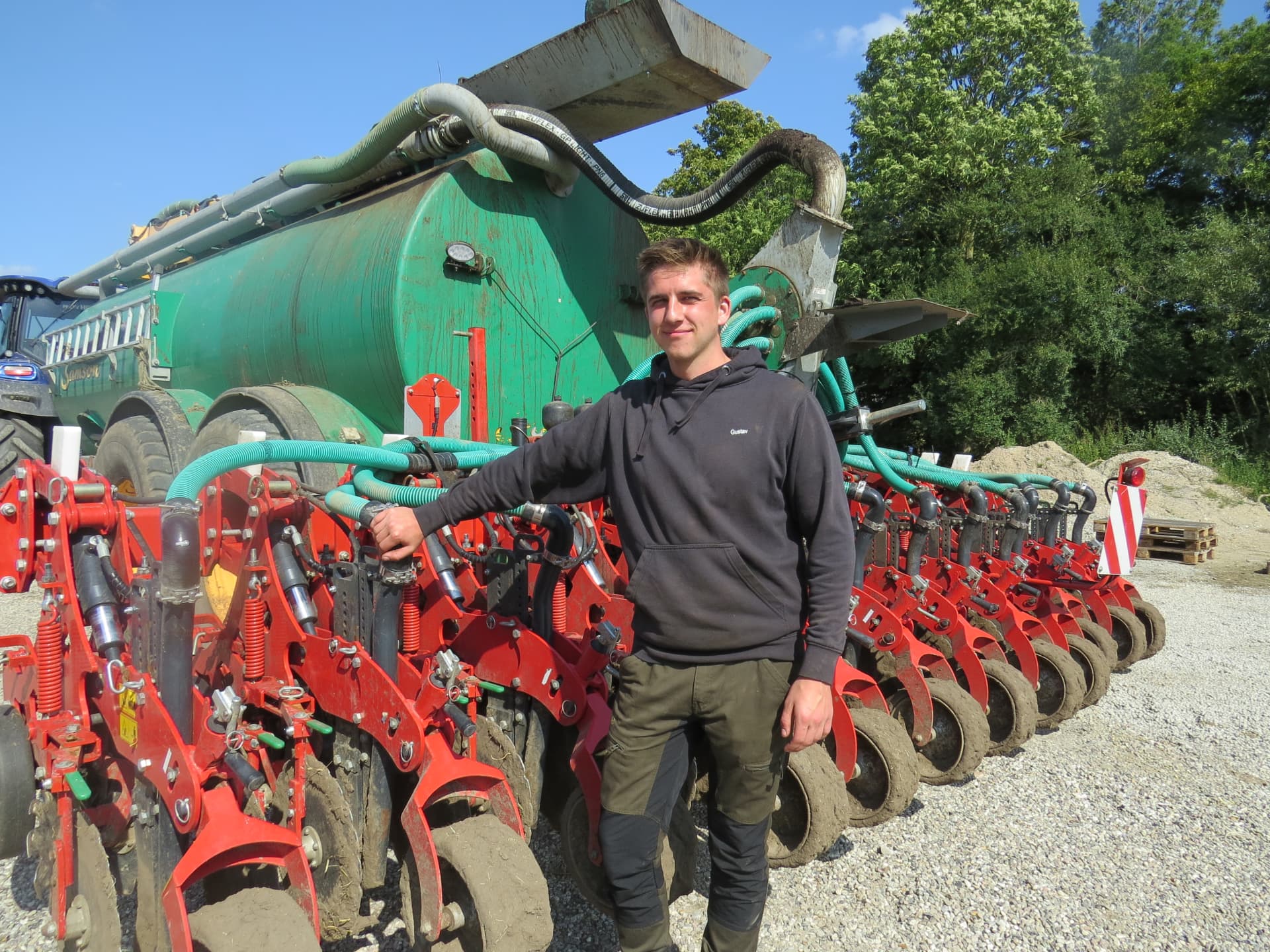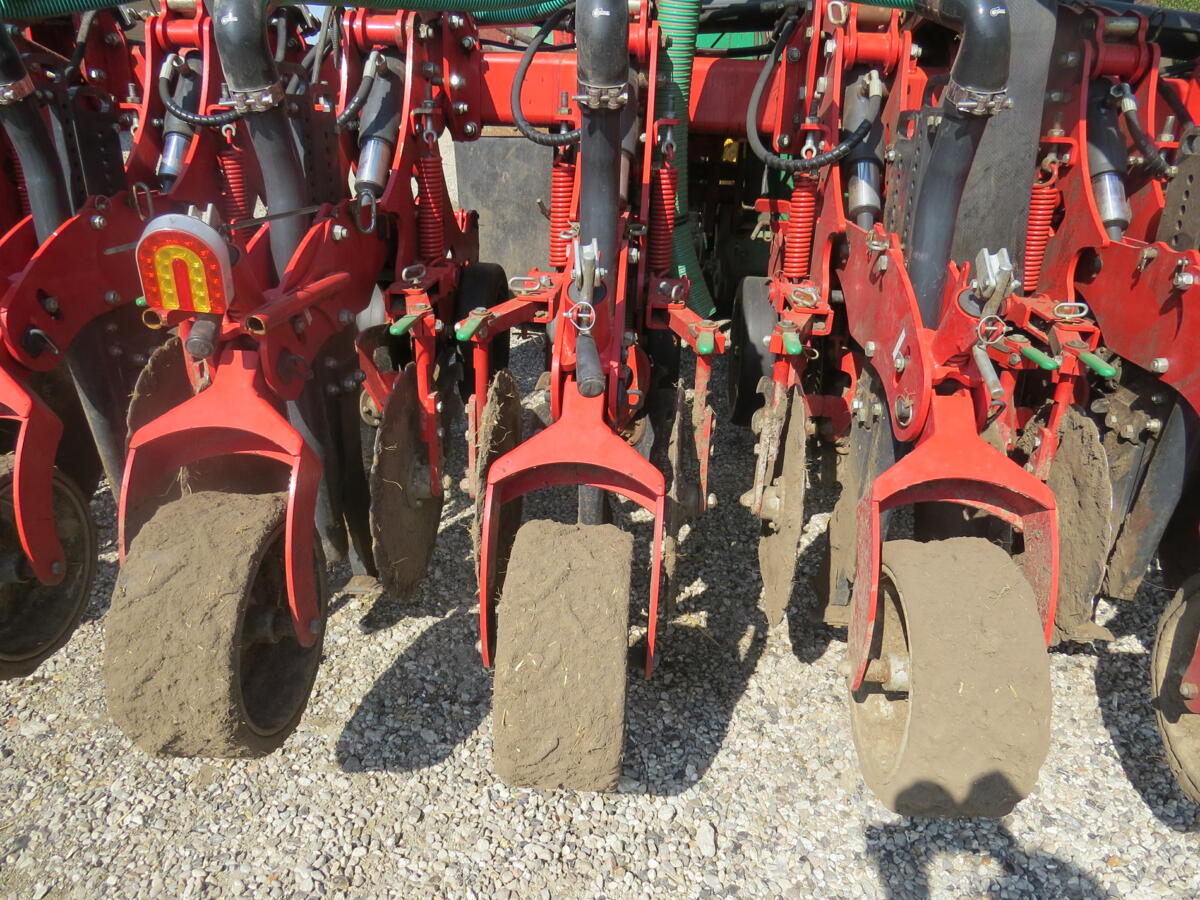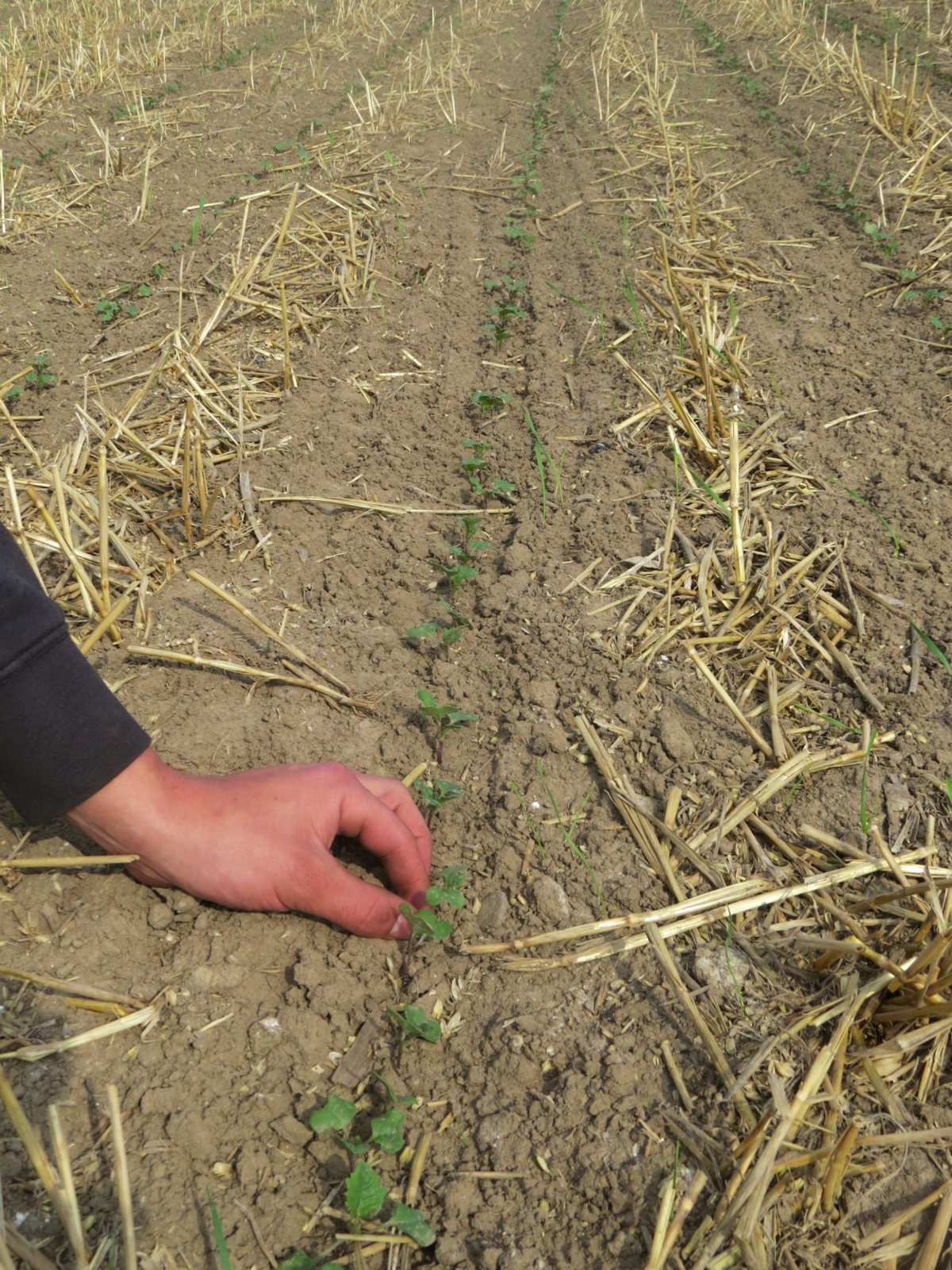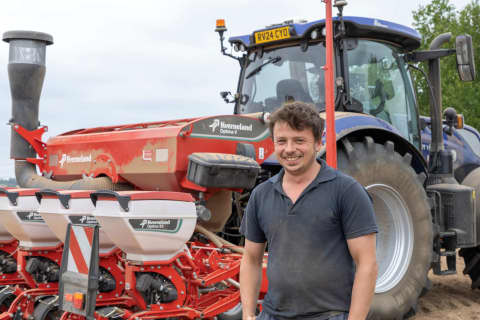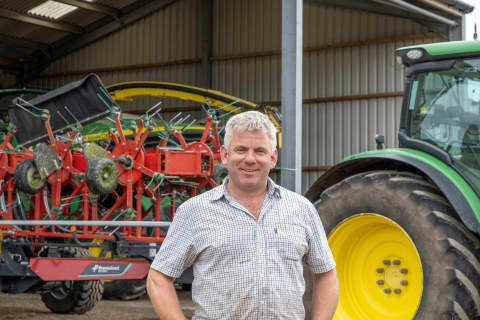Michael’s 12-row Kverneland Kultistrip Strip Cultivator and 12-row Kverneland Optima SX Precision Seeder—both with 50-centimeter row spacing—play a central role in his farming operations at Hyrdehøjgaard and Tolstrupgaard in Nordrup, near Ringsted. Here, Michael Mølgaard farms 900 hectares of corn, sugar beet, rapeseed, spinach, wheat, barley, and seed grass.
The Kverneland Kultistrip Strip Cultivator is a soil treatment tool that cultivates the soil in stripes as part of reduced tillage.
Tilling the soil in stripes
“We use the Kverneland Kultistrip Strip Tiller to cultivate the soil in the strips to be sown as part of the Kverneland Strip Till cultivation system. The soil is left untouched between the tilled strips,” explains Gustav Norbye, a full-time farmer at the crop farm in Central Zealand, Denmark.
“Here on site, we have mounted the Kverneland Strip Cultivator on a 20 cubic meter slurry tanker with the same working width. This traps and places the degassed slurry in the cultivated soil strips in the same workflow before planting corn, sugar beet, rapeseed, and spinach, which we grow on approximately 500 hectares. The trapper tines are built into the Kverneland Strip Cultivator,” adds Gustav Norbye.
We sow in the machined stripes
Gustav explains the process of how they utilize the Kverneland implements to maximize efficiency and productivity in their fields: “After the strip tillage and slurry incorporation, we sow the sugar beet, corn, rape, and spinach with the Kverneland Optima SX Precision Seeder in the cultivated strips where the slurry has been incorporated”.
“For several years, we had been looking for a system that would allow us to reduce weed pressure and place the slurry at the same time. That's when we came up with the idea of mounting the Kverneland Kultistrip Strip Cultivator on the back of the slurry tanker. By not disturbing the soil more than necessary, we ensure that fewer weed seeds germinate, resulting in a reduced weed pressure”. “We started using this system last year, so 2024 marks only our second year working with it,» says Gustav Norbye.
Precision required
“This is a complete system where precision is essential. For this to work, you need to drive on the same tracks - first with the slurry tanker, with the Kultistrip Strip Cultivator attached, and then with the seeding equipment. To make this process easier and more precise, everything is controlled by GPS with an accuracy of two centimeters.”
With this setup, we ensure that the seed is placed precisely over the slurry lines in the cultivated soil strips. In this way, we achieve maximum utilization of the plant nutrients from the slurry,” explains Gustav Norbye.
“Of course, there have been some things we've had to learn, but the maize, rapeseed, and sugar beet all look promising,” Gustav adds.
“We have mounted the Kultistrip Strip Cultivator on the back of the slurry tanker. Then we trap and place the degassed slurry in the cultivated soil strips in the same operation prior to sowing corn, sugar beet, rapeseed, and spinach,” explains farmer Gustav Norbye.
“The slurry trap teeth are built into the Kverneland Kultistrip Strip Cultivator, then the seed is placed precisely over the slurry lines. “
After strip tillage and slurry precipitation, sugar beet, corn, rapeseed, and spinach are sown at Hyrdehøjgaard and Tolstrupgaard. They use their 12-row Kverneland Optima SX Precision Seeder to ensure precise seed placement over the nutrient-rich slurry lines, optimizing crop establishment and nutrient utilization from the start.
This oilseed rape was sown with the farm's Kverneland Optima SX Precision Seeder in the cultivated soil strips after the Kverneland Kultistrip Strip Cultivator. The picture was taken on August 26, 2024, just 12 days after sowing.

